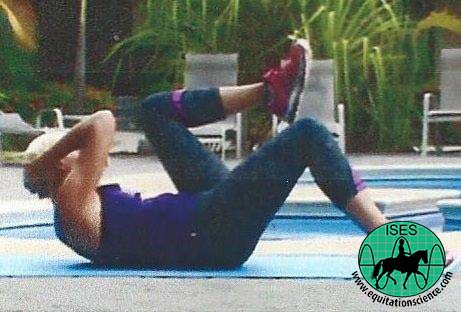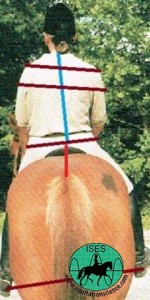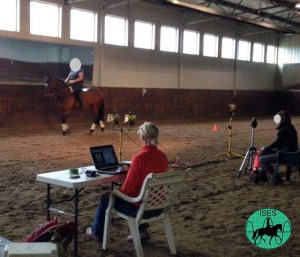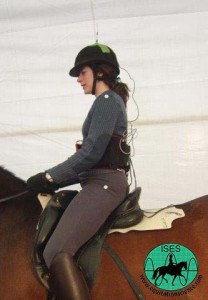Influence of 8-Week Rider Core Fitness Program on Equine Back at Sitting Trot
International Society For Equitation Science
Presenting at the 11th International Society for Equitation Science (ISES) Conference, researcher Alexandra Hampson MSc Equine Science from The Royal (Dick) School of Veterinary Studies at The University of Edinburgh, Scotland, stated that previous research has identified that most riders display a preference for side laterality of the pelvis and shoulders. These findings prompted the question “could exercise, aimed at promoting core strength training, affect trunk angle, lateral alignment, and symmetry of the rider?”
Core stability refers to an individual’s ability to control the position and motion of the trunk over the pelvis, which can be argued has the potential to affect control of the body and limbs during athletic activities. The physical influence of the rider is being increasingly recognized as an important contributor to equine back pain and lameness, and research demonstrates that asymmetrical loading, in particular, can be damaging to the horse.
The aim of the study conducted by Hampson was to examine the effects of an 8-week unmounted rider core fitness program on rider symmetry by evaluating three dependent variables; left-right saddle mean pressure difference, maximum total force of the saddle on the horse’s back, and equine stride length. Ten healthy medium level dressage horse and rider pairs each fitted with an electronic saddle pad, performed two ridden tests at sitting trot, before and after participating in an 8-week rider sport-specific core fitness program.
Results from the study revealed that participating in a core fitness program can have a significant effect on rider symmetry and reduce peak pressures on the horse’s back, and consequently, provide an important method for improving equine welfare. Researchers noted that although further larger scale studies are needed, there was sufficient evidence to support the development of evidence-based, sport-specific equestrian rider fitness programs.
The International Society for Equitation Science Conference offers an outstanding international platform for scientists and professional practitioners to present and discuss research related to the field of equitation science. For more information about the ISES 2015 conference, venue and program: http://www.ises2015vancouver.com/














